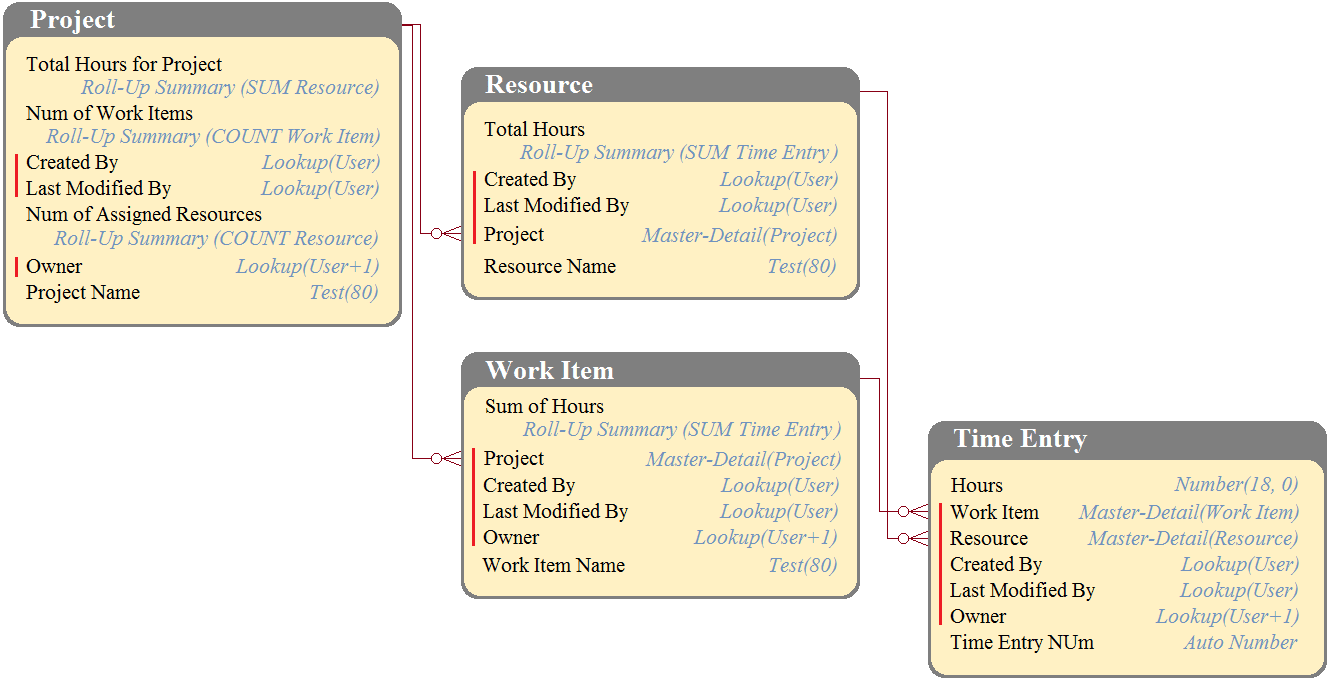Salesforce Data-Architect - Salesforce Certified Platform Data Architect (Plat-Arch-201)
DreamHouse Realty has a data model as shown in the image. The Project object has a private sharing model, and it has Roll-Up summary fields to calculate the number of resources assigned to the project, total hours for the project, and the number of work items associated to the project.
There will be a large amount of time entry records to be loaded regularly from an external system into Salesforce.

What should the Architect consider in this situation?
Universal Containers (UC) is expecting to have nearly 5 million shipments records in its Salesforce org. Each shipment record has up to 10 child shipment item records. The Shipment custom object has an Organization-wide Default (OWD) sharing model set to Private and the Shipment Item custom object has a Master-Detail relationship to Shipment. There are 25 sharing rules set on the Shipment custom object, which allow shipment records to be shared to each of UC's 25 business areas around the globe. These sharing rules use public groups, one for each business area plus a number of groups for management and support roles. UC has a high turnover of Sales Reps and often needs to move Sales Reps between business areas in order to meet local demand. What feature would ensure that performance, when moving Sales Reps between regions, remains adequate while meeting existing requirements?
Universal Containers (UC) is implementing Salesforce Sales Cloud and Service Cloud. As part of their implementation, they are planning to create a new custom object (Shipments), which will have a lookup relationship to Opportunities. When creating shipment records, Salesforce users need to manually input a customer reference, which is provided by customers, and will be stored in the Customer_Reference__c text custom field. Support agents will likely use this customer reference to search for Shipment records when resolving shipping issues. UC is expecting to have around 5 million shipment records created per year. What is the recommended solution to ensure that support agents using global search and reports can quickly find shipment records?
Get Cloudy Consulting monitors 15,000 servers, and these servers automatically record their status every 10 minutes. Because of company policy, these status reports must be maintained for 5 years. Managers at Get Cloudy Consulting need access to up to one week's worth of these status reports with all of their details.
An Architect is recommending what data should be integrated into Salesforce and for how long it should be stored in Salesforce.
Which two limits should the Architect be aware of? (Choose two.)
Universal Containers (UC) is a major supplier of office supplies. Some products are produced by UC and some by other manufacturers. Recently, a number of customers have complained that product descriptions on the invoices do not match the descriptions in the online catalog and on some of the order confirmations (e.g., "ballpoint pen" in the catalog and "pen" on the invoice, and item color labels are inconsistent: "what vs. "White" or "blk" vs. "Black"). All product data is consolidated in the company data warehouse and pushed to Salesforce to generate quotes and invoices. The online catalog and webshop is a Salesforce Customer Community solution. What is a correct technique UC should use to solve the data inconsistency?
NTO processes orders from its website via an order management system (OMS). The OMS stores over 2 million historical records and is currently not integrated with SF. The Sales team at NTO using Sales cloud and would like visibility into related customer orders yet they do not want to persist millions of records directly in Salesforce. NTO has asked the data architect to evaluate SF connect and the concept of data verification. Which 3 considerations are needed prior to a SF Connect implementation?
Choose 3 answers:
Universal Containers has a large number of Opportunity fields (100) that they want to track field history on. Which two actions should an architect perform in order to meet this requirement? Choose 2 answers



